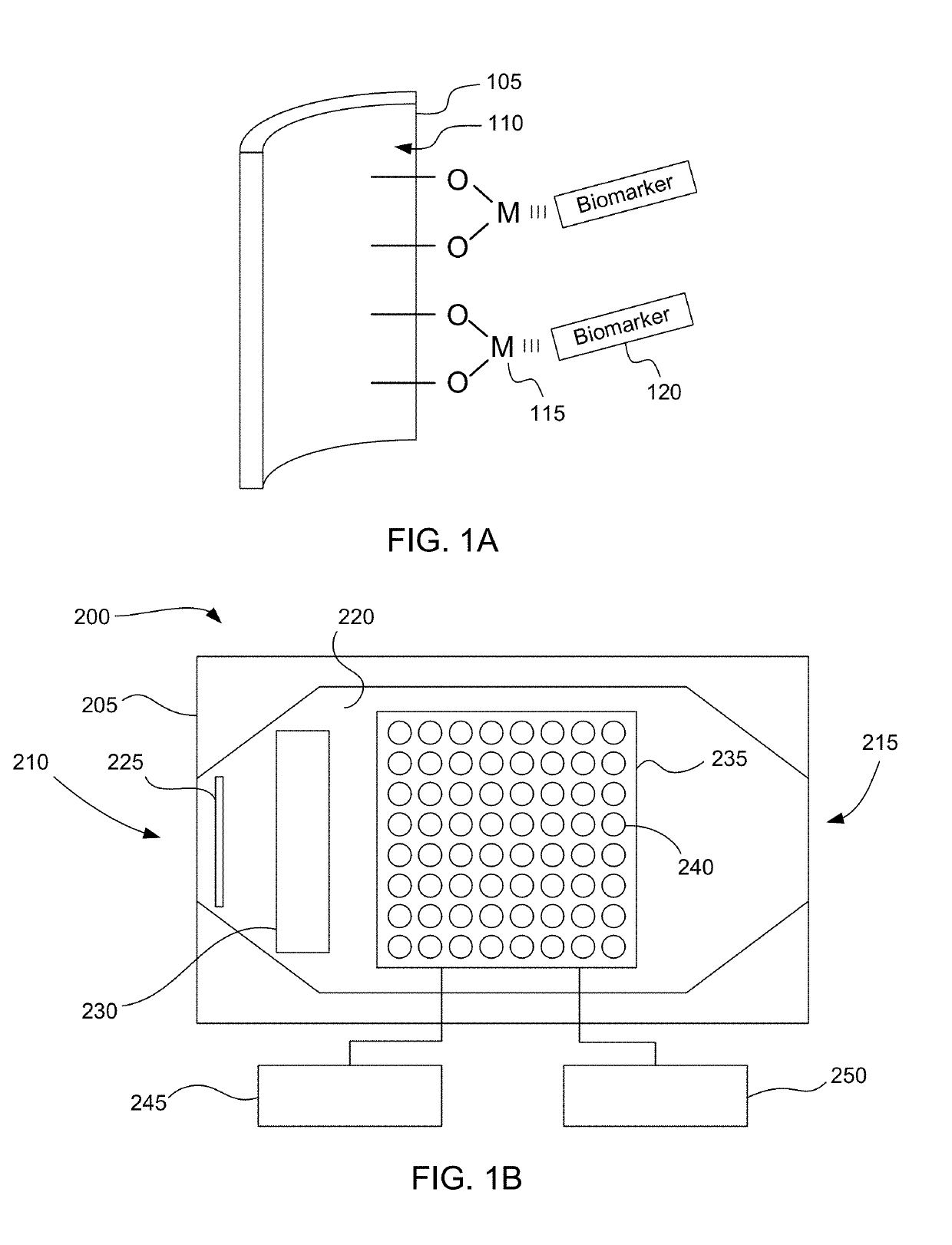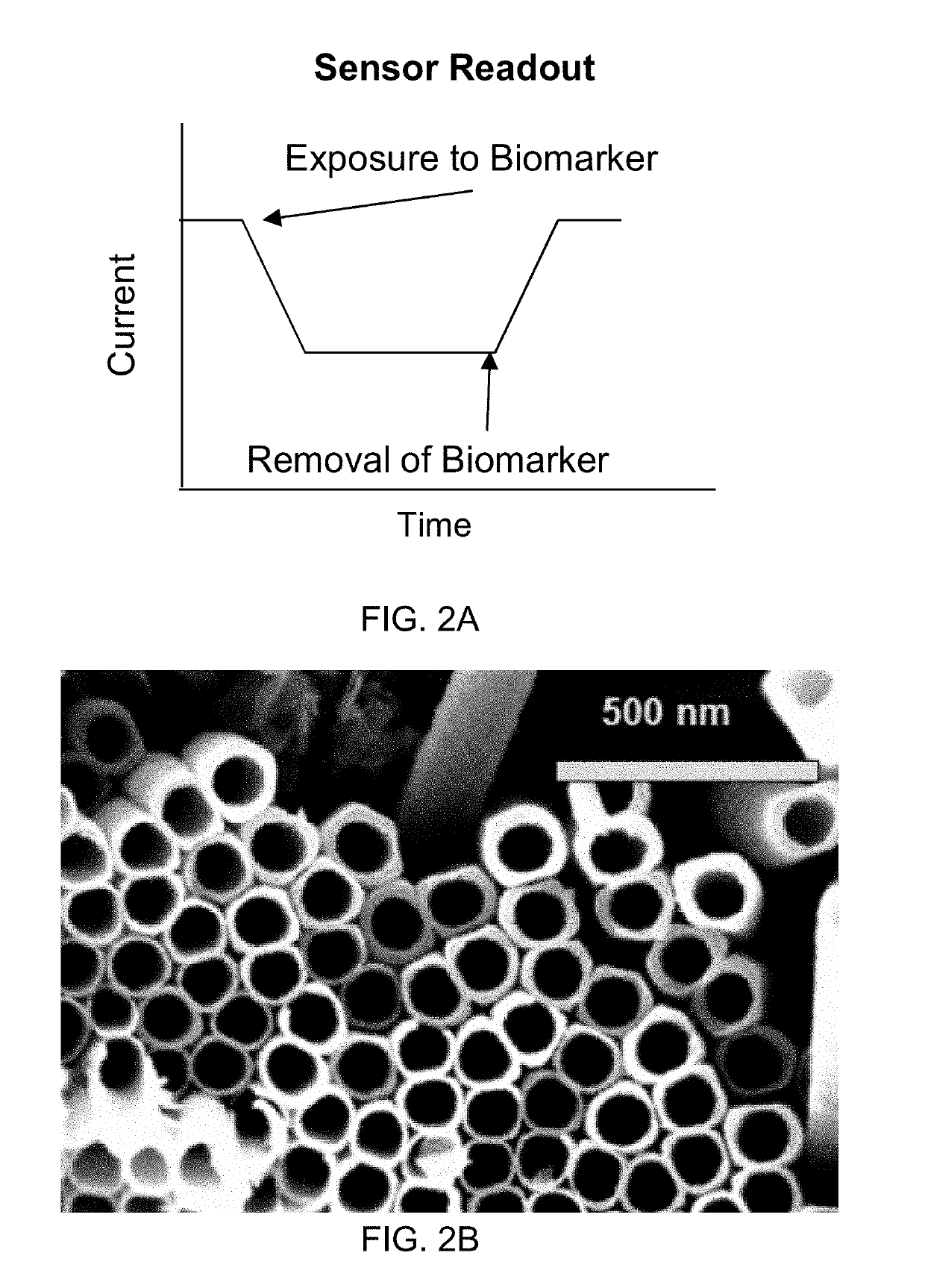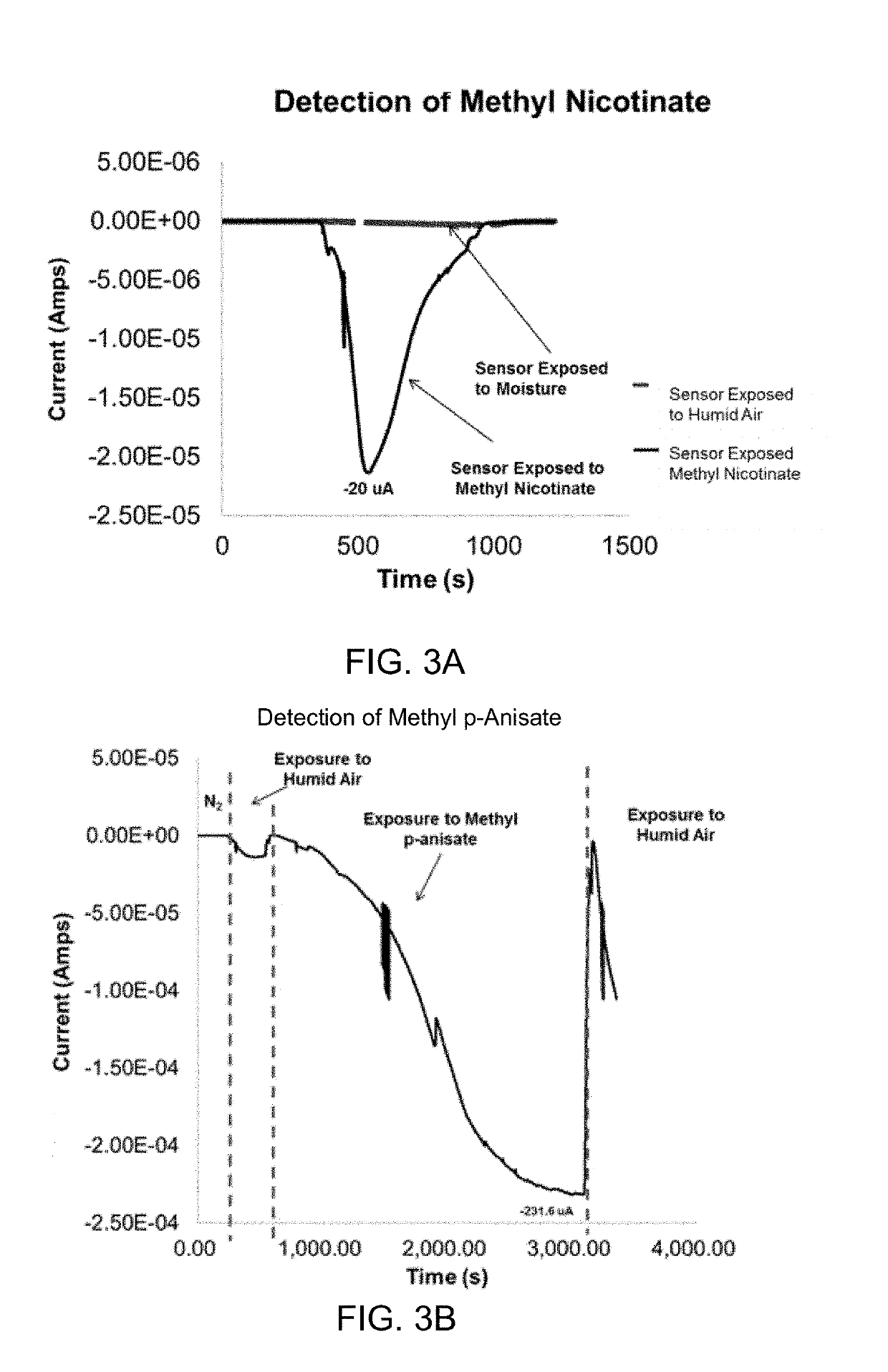Functionalized nanotube sensors and related methods
a technology of nanotubes and sensors, applied in the direction of instruments, biological material analysis, material electrochemical variables, etc., can solve the problems of poor sensitivity, inability to determine the drug susceptibility analysis of mycobacterium from microscopy testing, and the sputum smear tes
- Summary
- Abstract
- Description
- Claims
- Application Information
AI Technical Summary
Benefits of technology
Problems solved by technology
Method used
Image
Examples
example 1
stem
[0051]Methods for detecting the volatile biomarkers for tuberculosis already exist (gas chromatography, mass spectrometry), but these are not appropriate for low resource settings at the POC. There is a clear technological gap that can be filled by use of the disclosed sensors and methods. In this example, the sensor is a portable breathalyzer device (e.g. one that is approximately 8 to 10 cm in length and width or smaller) that contains arrays of TiO2 that are functionalized with different elements for detecting different types of volatile biomarkers given off by mycobacterium that reside in the lungs. The electronic response of the device is on the order minutes per test. This rapid response time is orders of magnitude faster than any test currently in use. Furthermore the nanotube sensing element described here can be regenerated and reused which further reduces the cost per test and reduces the cost of waste disposal which adds to the overall cost of the device.
[0052]In this...
example 2
ry Studies
[0054]Preliminary studies using cyclic voltammetry methods identified cobalt (II) as being a leading candidate for binding methyl nicotinate and methyl p-anisate. These methods showed suitable bias voltages of −0.2 V and −0.8 V for methyl nicotinate and methyl p-anisate respectively. These voltages gave the maximum signal during detection and can be used to change the selectivity of the sensor in the presence of multiple volatile organic markers. TiO2 nanotubes were then synthesized using electrochemical anodization and functionalized with cobalt (II) using metal ion exchange methods previously described.
[0055]Briefly, cobalt(II) chloride is dissolved in ethanol and a TiO2 nanotube array is incubated in the solution for several hours before drying in a vacuum oven. This results in cobalt (II) on the surface of the nanotubes. The cobalt (II) is a strong oxidizer and reacts with the methyl nicotinate and methyl p-anisate. FIGS. 3A and 3B show preliminary results for cobalt (...
example 4
ation and Characterization of Elements that Interact with the Candidate Volatile Biomarkers Using Computational Calculation
[0059]Using computational modeling techniques, this experiment studies metal interaction with VOBs to identify the metals with high affinity towards the biomarkers. Preliminary results indicate cobalt (II) is a suitable metal candidate for methyl nicotinate and methyl p-anisate. Studies can be used to screen and select specific metal ions for use with specific biomarkers. Lastly the selectivity issue for the sensor can be addressed by determining the relative binding strength for volatile organic compounds (VOCs) such as isopropanol, acetone, and methanol which are commonly found in human breath.
[0060]The sensor device is based on metal ion functionalized titanium dioxide nanotubes, where the nature of the metal ion determines whether or not VOB detection takes place. The metal-biomarker interaction prompts a change in the electrical resistivity of the sensing m...
PUM
 Login to View More
Login to View More Abstract
Description
Claims
Application Information
 Login to View More
Login to View More - R&D
- Intellectual Property
- Life Sciences
- Materials
- Tech Scout
- Unparalleled Data Quality
- Higher Quality Content
- 60% Fewer Hallucinations
Browse by: Latest US Patents, China's latest patents, Technical Efficacy Thesaurus, Application Domain, Technology Topic, Popular Technical Reports.
© 2025 PatSnap. All rights reserved.Legal|Privacy policy|Modern Slavery Act Transparency Statement|Sitemap|About US| Contact US: help@patsnap.com



